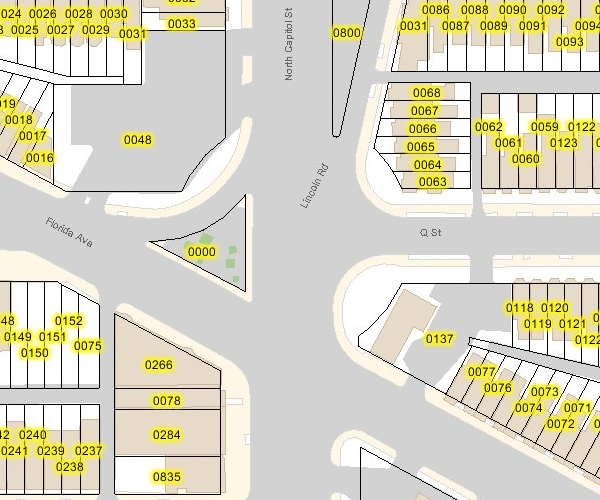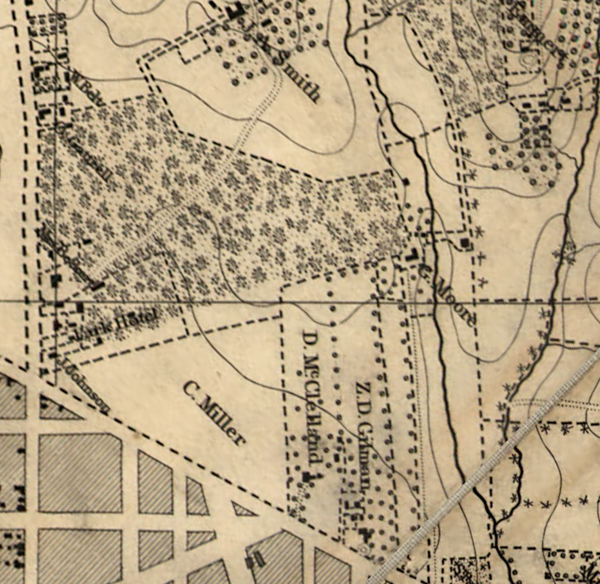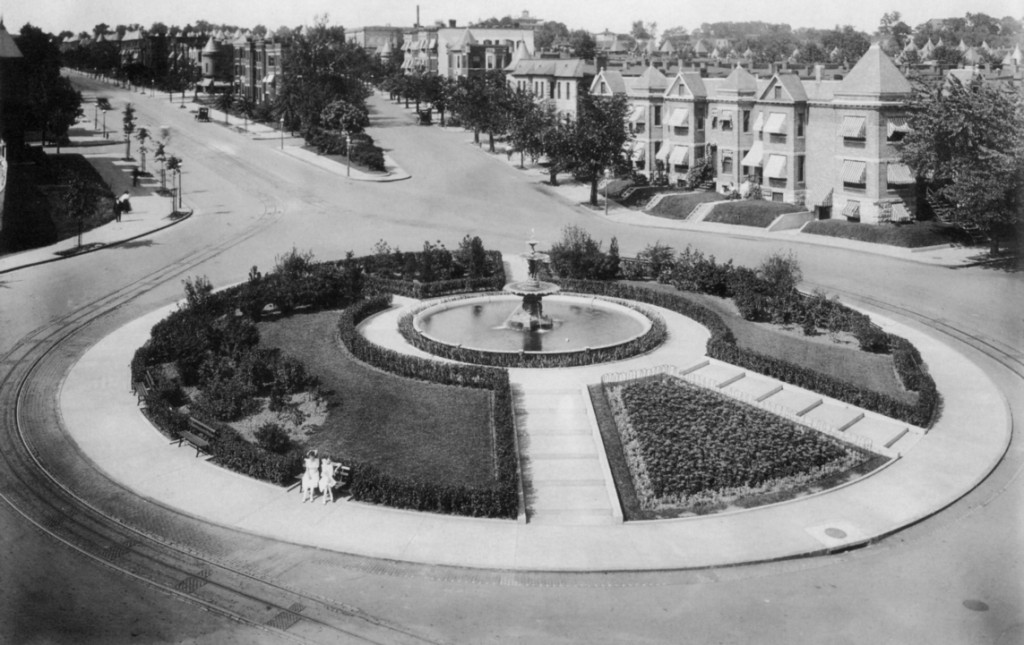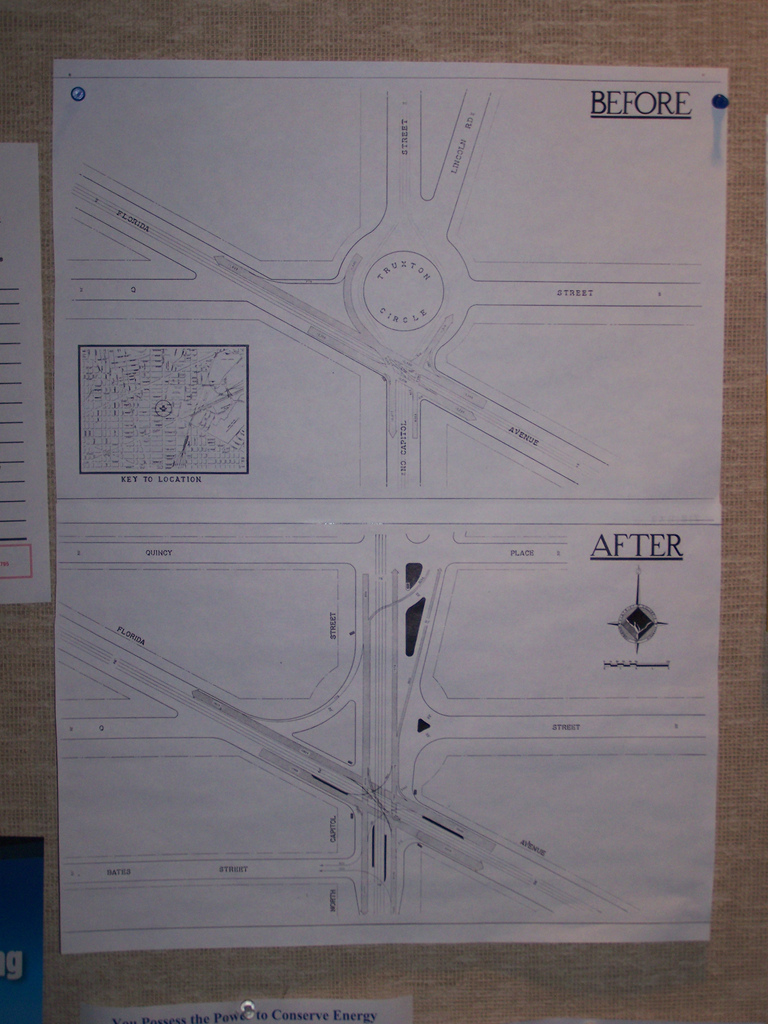Meet your neighbors at July’s happy hour
Meet your neighbors and check out Bloomingdale’s newest pub! The next LeDroit Park happy hour will be at The Pub and the People (1648 North Capitol St NW) in Bloomingdale on Tuesday, July 14 from 6:30 pm to 8:30 pm.
We hope to see you there.
Article recounts the early days and residents of LeDroit Park
A Bloomingdale resident share this 1937 news story in which the author recounts the early days and residents of LeDroit Park.
The writer describes what LeDroit Park looked like before 1875, which is about the time the neighborhood started to develop. He recalls that he could stand at 7th Street and Florida Avenue (née Boundary Street) and see all the way down to North Capitol Street.
Few houses stood on Florida Avenue at that time, he notes. The Washington & Georgetown Railroad, a streetcar company, kept a car barn on the triangular block opposite what is now the Howard Theatre.
The neighborhood was created by combining the Miller, Prather, McClelland, and Gilman properties pictured below. The Prather property was used as a pasture and the Miller property was not maintained.
The wood and iron fence, which caused a great dispute in the 1880s, extended from the neighborhood’s boundary at 2nd Street to within a few feet of 7th Street. “At the west of the grounds is an attractive old gate, made to match the artistic fence. It was evidently driveway gate, though its use as such has been abandoned and the driveway itself obliterated.”
Early residents
The author lists several of the neighborhood’s earlier residents. Before LeDroit Park became the favorite enclave of Washington’s black elite, it housed many prominent whites. While few of the people listed below are household names today, many of them held high positions in government.
- Henry Gannett, Chief Geographer, U.S. Geological Survey, and described as the “Father of Government Mapmaking“
- Rep. Benjamin Butterworth, House of Representatives (R-OH) and Commissioner of Patents
- Arthur A. Birney, U.S. Attorney for the District of Columbia
- Col. O. H. Irish, Chief, Bureau of Engraving and Printing
- Sumner I. Kimball, General Superintendent, U.S. Life Saving Service, forerunner to the U.S. Coast Guard
- William T. Hornaday, Chief Taxidermist, U.S. National Museum (now called the Smithsonian) and controversial director of the Bronx Zoo
- Arnold B. Johnson, Chief Clerk, U.S. Lighthouse Board
- Edmund Wood, Chief of the Financial Division, Bureau of Indian Affairs
- De Lancey Gill, painter and photographer, Smithsonian Bureau of American Ethnology
- George S. Prindle, patent attorney
- Ellery C. Ford, lawyer (This name appears at the African-American Civil War Memorial on U Street)
- Andrew Langdon, co-developer of LeDroit Park
- James H. McGill, architect of LeDroit Park and other Washington buildings
- Staughton S. Doyle, music teacher
- Ezra B. Barnum, clothier and grand juror who indicted Charles Guiteau, who assassinated Pres. James Garfield in 1881
- Dr. Joseph N. Rose, botanist
- J. J. Albright, possibly the wealthy coal magnate and associate of LeDroit Park developer Amzi Barber.
- Capt. Howard L. Prince, Civil War captain and Librarian of the U.S. Patent Office
- George E. Sloat, employee of the Pension Office
- Charles Ruoff, partner, Willet & Ruoff
- Marie Ginesi, employee of the Post Office
- Charles Darwin (no, not that Charles Darwin), librarian, U.S. Geological Survey
- W. Scott Smith, correspondent, New York Times
Here are names I haven’t been able to research:
Brenton L. Baldwin, Emma B. Smith, F. H. Ramey, W. E. Williams, Ralph Baldwin, B. Pettingill, S. S. Gannett, F. J. Young, Henry A. Merrick, Rev. C. H. Fay, N. M. Brush, Charles W. Fisher, Abram L. Swartout, W. Norman Fleming, Charles A. Hamilton, O.B. Brown, William H. Degges, W. F. Hildebrand, James A. Marter, T. B. Campbell, T. J. W. Robertson, E. M. Merrick, H. B. Wyman, M. Horstman, A. W. Conlee, C. R. Follin, Mary Ragan, Oscar T. Towner, E. Woodruff, W. Hollingsworth, H. E. Cooper, and J. B. Thomas.
If you dig up any information on these people, please add it to the comments.
Battle ensues over control of Crispus Attucks Park
The Post is running an article about the battle over control of Crispus Attucks Park in Bloomingdale. The park is a hidden gem in Bloomingdale. It’s embedded in the middle of the block bounded by North Capitol Street, U Street NW, V Street NW, and First Street NW.
The park is on land once owned by C & P Telephone, but which was transferred to a non-profit in the 1970s. But who controls the non-profit that controls the park? Aye, there’s the rub.
Historic fountains rot away in a local national park
Two century-old DC fountains sit decaying and neglected in the woods of a national park in Maryland. The fountains had been missing from the 1940s until they were rediscovered in the woods of Fort Washington National Park in the 1970s.
The top portion of the McMillan fountain, pictured below, was returned to Crispus Attucks park in the Bloomingdale neighborhood in 1983. In 1992 it was moved back to the fenced-off grounds of the McMillan Reservoir just a few blocks away.
The fountain was installed in 1913 at the McMillan Reservoir as a memorial to Senator James McMillan (R – Michigan), who is more remembered locally for his his ambitious McMillan Plan to beautify Washington. The fountain was dismantled in 1941, when the reservoir was fenced off from the public.
Though the top of the McMillan Fountain had been restored to the reservoir grounds, a Bloomingdale ANC commissioner told me the base of the fountain was in the woods in Fort Washington along with the remains of the fountain that stood at the center of the now-razed Truxton Circle.
I went to Fort Washington in search of these discarded works of art. I asked a park ranger where the fountain was and she drew me a map, saying that it stood in the park’s “dump” and partly behind a fence.
I went to the picnic area nearest the site and walked into the woods a short distance where I found a fence. Behind it stood piles of bricks and other discarded building materials.
Beside the site is a dugout that serves as the back court to Battery Emory, a concrete gun battery built in 1898 to protect the capital city from enemy ships.
As I passed through the unfenced dugout, I immediately spotted few granite blocks that served as the cornerstones of the base bowl. Though they are strewn about the ground, a 1912 photograph can help us identify what pieces went where.
The elements of the fountain were stacked like totem pole. The bottom element features carved classical allegorical heads from whose mouths water gushed into the carved bowls below.


Fence material and tree debris cover the carved granite (left) that stood as the fountain base (right).
The next element of the stack is the fluted base to the top bowl.
Several other large granite stones are stacked and marked with numbers, presumably to help in reassembly.
The site also contains the rusting remains of the fountain that stood at Truxton Circle, which formed the intersection of North Capitol Street, Florida Avenue, Lincoln Road, and Q Street. The circle was built around 1901 and the fountain installed there originally stood at the triangle park at Pennsylvania Avenue and M Street in Georgetown.

Truxton Circle stood at Florida Avenue, North Capitol Street, Q Street, and Lincoln Road from 1901 to 1940, when it was demolished to aid commuter traffic.
A newspaper at the time described it as one of the largest fountains in the city. The circle was removed in 1940 to ease the flow of commuter traffic. At that time, the fountain, which may date to as early as the 1880s, made its way to Fort Washington to rust in the woods.


The metal pedestal (left) held up the fountain bowl whose rim rusts in pieces on the ground (right). Notice the classical egg-and-dart pattern.
The fountain was also noted for the metal grates that stood near its base. Now these grates sit rusting in the woods.
If you want to see the fountain remains for yourself at Fort Washington National Park, go to picnic area C. Beyond the end of the parking lot is a restroom building and behind that is the fountain “graveyard.” A fence encloses part of the site, but you can enter through the large gap down the hillside.
Rather than tossing aside our city’s artistic patrimony, we should aim to restore these treasures to the neighborhoods from which they came. Public art is part of what differentiates cherished neighborhoods from unmemorable places.
These works remind us of the accomplishments and civic-mindedness of generations past and urge us to carry on the tradition of civic improvement for generations to come.
Where is Truxton Circle?
You’ve seen the streetpole banners on Florida Avenue designating the area around North Capitol Street as Truxton Circle. But exactly where is the circle? The circle, pictured above, used to sit right there at the convergence of North Capital Street, Florida Avenue, Q Street, and Lincoln Road.
Urban planning blogger Richard Layman spotted a diagram of the old circle posted on the wall at the offices of DDOT.
In 1940 the District removed the circle and replaced it with a traditional intersection that failed, and continues to fail, to match the elegance of the original circle pictured at the top of this post.
A quick perusal of the DC Atlas, the District’s main online map product, reveals the circle’s imprint on the properties just north of Florida Avenue. It seems that the property lines still accommodate the circle.

Great Truxton's ghost! Proptery lines still show outer limit of the old circle.
Perhaps DDOT will one day resurrect the circle after its seventy-year absence. In 2006, DDOT restored downtown’s Thomas Circle to its original shape, eliminating the almond-shaped cut-through for Fourteenth Street. In the 1980s the District similarly restored Logan Circle, eliminating the Thirteenth Street cut-through. Here in LeDroit Park, Third Street bisected Anna J. Cooper Circle until the District in 1984 restored it to its original circular shape.





















Recent Comments